Introduction
All 1-Wire device data sheets describe two sets of commands. The first set referred to as ROM Function Commands are used for device identification and selection. The second set is often called Memory Function Commands but may contain other non-memory operations. A ROM Function Command must be completed each time a device is selected to get it ready for a Memory Function Command. The 1-Wire APIs created by Dallas Semiconductor utilize these commands to do operations with 1-Wire devices. Sometimes it is not always obvious what commands are being called. This document will map the commands presented in the data sheets to the API functions. Where specific API functions are not available, a technique will be presented to translate the commands using the generic communications API functions.See Application Note 155 for a detailed description of the various APIs including the abbreviations discussed in this document (PD, TMEX, OWAPI, OWCOM). (Special terms, commands, or codes are shown in italics for clarity.)
ROM Function Commands
The ROM Function Commands are used to either discover the ROM ID or use the ROM ID to select a device in various modes. The ROM ID is a unique 64-bit number that contains a family code, serialization field, and a cyclic redundancy check (CRC). The 1-Wire master transmits one of these functions after it has issued a 1-Wire reset and received a presence.The Read ROM command reads the ROM ID directly. It can only be used on a 1-Wire network where there is only one device attached. With networks of more than one device, the ROM ID must be discovered with the Search ROM command. This search algorithm is discussed in detail in Application Note 187. The Conditional Search ROM command works the same as Search ROM except only 1-Wire devices that are in some kind of alarm state will respond. This is used to discover only devices that need attention.
The Skip ROM command is used to select all devices regardless of its ROM ID. This could be used to gang program memory devices provided there is sufficient energy. The Overdrive Skip command is similar but it not only selects all devices it also puts those devices at the Overdrive communication rate. This is most often used to move all capable 1-Wire devices to Overdrive speed. After the devices are communicating in Overdrive, the ROM IDs can be discovered using the conventional Search ROM sequence.
The Match ROM command selects a specific device by broadcasting a selected ROM ID. The Overdrive Match is similar but it also switches the device to the Overdrive communication speed. The Resume Command is used to reselect the last device that was selected. This is a shortcut command when repeatedly accessing the same device.
Table 1 maps the APIs to a particular ROM Function Command. Note that since the various 1-Wire APIs are designed with the idea of multiple 1-Wire devices on a network, the commands that require or are most useful in a single device network are not supported directly. However any command can be constructed using the basic communication functions as will be discussed later in Custom Commands.
Table 1. ROM Function Commands
| Command | PD | TMEX |
| Read ROM | No predefined API, see Custom Commands. | No predefined API, see Custom Commands. |
| Match ROM | owAccess | TMAccess |
| Search ROM | owFirst, owNext | TOMFirst, TMNext |
| Conditional Search ROM | owFirst, owNext | TMFirstAlarm, TMNextAlarm |
| Skip ROM | No predefined API, see Custom Commands. | No predefined API, see Custom Commands. |
| Overdrive Skip* | No predefined API, see Custom Commands. | No predefined API, see Custom Commands. |
| Overdrive Match | owOverdriveAccess | TMOverAccess |
| Resume Command** | No predefined API, see Custom Commands. | No predefined API, see Custom Commands. |
| ? | ||
| Command | OWAPI | OWCOM |
| Read ROM | No predefined API, see Custom Commands. | No predefined API, see Custom Commands. |
| Match ROM |
(package com.dalsemi.onewire.adapter) DSPortAdapter.select |
DSPortAdapter.select |
| Search ROM |
(package com.dalsemi.onewire.adapter) DSPortAdapter.getFirstDeviceContainer, DSPortAdapter.getNextDeviceContainer |
DSPortAdapter.getFirstDeviceContainer, DSPortAdapter.getNextDeviceContainer |
| Conditional Search ROM |
(package com.dalsemi.onewire.adapter) DSPortAdapter.setSearchOnlyAlarmingDevices (then same as Search ROM) |
DSPortAdapter.setSearchOnlyAlarmingDevices (then same as Search ROM) |
| Skip ROM | No predefined API, see Custom Commands. | No predefined API, see Custom Commands. |
| Overdrive Skip* | No predefined API, see Custom Commands. | No predefined API, see Custom Commands. |
| Overdrive Match* |
(package com.dalsemi.onewire.container) OneWireContainer.setSpeed OneWireContainer.doSpeed |
OneWireContainer.setSpeed OneWireContainer.doSpeed |
| Resume Command** | No predefined API, see Custom Commands. | No predefined API, see Custom Commands. |
**Note: Only applies to 1-Wire devices that support the Resume Command.
Memory Function Commands
The Memory Function Commands vary slightly from one device type to another. However their primary objective is the same, which is to read and write the memory areas of the device. To deal with these diverse command structures, the 1-Wire APIs were constructed to abstract out these differences. For example, a generic write memory API may use a Write Scratchpad, Read Scratchpad, and Copy Scatchpad sequence or it may use an EPROM Write Memory sequence. To the API user, it looks the same.There are three levels of memory commands in most of the APIs. The first allows reading and writing to the memory without any structure (raw). The second uses a packet structure called the Universal Data Packet (UDP). The third type combines multiple UDP structures into a file structure. See Application Note 114 for a description of the UDP and file structure. Table 2 maps the APIs to the three types of memory operations.
Table 2. Abstract Memory Functions
| Command | PD | TMEX |
| Write Raw | owWrite | TMProgramBlock (EPROM only) (see Custom Commands) |
| Read Raw | owRead | TMProgramBlock (EPROM only) (see Custom Commands) |
| Write UDP | owWritePagePacket | TMWritePacket |
| Read UDP | owReadPagePacket | TMReadPacket |
| Write File |
owCreateFile owWriteFile |
TMCreateFile TMWriteFile |
| Read File |
owOpenFile owReadFile |
TMOpenFile TMReadFile |
| ? | ||
| Command | OWAPI | OWCOM |
| Write Raw |
(package com.dalsemi.onewire.container) MemoryBank.write |
MemoryBank.write |
| Read Raw | MemoryBank.read | MemoryBank.read |
| Write UDP |
(package com.dalsemi.onewire.container) PagedMemoryBank.writePagePacket |
PagedMemoryBank.writePagePacket |
| Read UDP |
(package com.dalsemi.onewire.container) PagedMemoryBank.readPagePacket |
PagedMemoryBank.readPagePacket |
| Write File |
(package com.dalsemi.onewire.application.file) OWFileOutputStream.write |
OWFileOutputStream.write |
| Read File |
(package com.dalsemi.onewire.application.file) OWFileInputStream.read |
OWFileInputStream.read |
Some of the commands that are included under Memory Function Commands in data sheets are actually custom device commands. See the following section for a guide on how to deal with these commands.
Custom Commands
Almost all of the custom commands can be derived by first selecting the device with a Match ROM equivalent API and then send a bidirectional block of data to the 1-Wire network. The block is constructed by putting in the write commands that are required into the block and putting in FF (hex) bytes into the block that are reads from the 1-Wire device. For example, the DS1994 has a memory-mapped real-time clock (RTC) register that can be accessed with the Read Memory command. Figure 1 below is taken from the DS1994's data sheet.The DS1994 is no longer recommended for new designs.
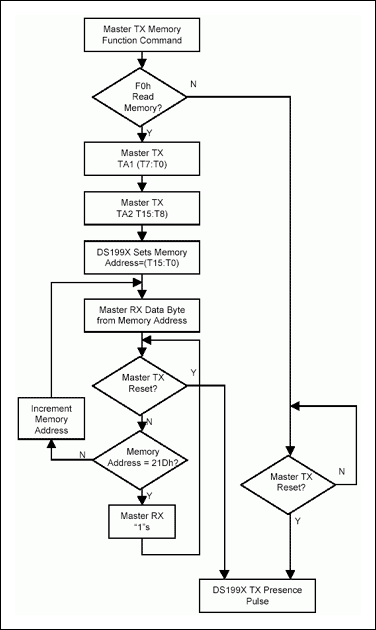
Figure 1. DS1994 read memory flow (data sheet).
As the DS1994 data sheet specifies, the RTC register is five bytes long starting at address 0202(hex). The memory command flow as seen in Figure 1 starts after the device has been selected with a ROM Function Command like Match ROM.
Table 3 below lists the eight bytes that make up a block of bidirectional data to be sent to the 1-Wire bus based on the flow chart. While this data could be sent a byte at a time, it is often more efficient to create a block and sent it all at once.
Table 3. Read RTC Block
| Block Offset | Byte Value (hex) | Description |
| 0 | F0 | Master TX Read Memory command |
| 1 | 02 | Master TX TA1 (address, least significant byte, T7:T0) |
| 2 | 02 | Master TX TA2 (address, most significant byte, T15:T8) |
| 3 | FF | Master RX byte 0 of RTC (address 0202h) |
| 4 | FF | Master RX byte 1 of RTC (address 0203h) |
| 5 | FF | Master RX byte 2 of RTC (address 0204h) |
| 6 | FF | Master RX byte 3 of RTC (address 0205h) |
| 7 | FF | Master RX byte 4 of RTC (address 0206h) |
Figure 2 is a 'C' example written for the 1-Wire Public Domain (PD) API that uses the block outlined in Table 3 to read the RTC of the DS1994.
Figure 2. PD Example Reading RTC
unsigned char datablock[] = { 0xF0,0x02,0x02,0xFF,0xFF,0xFF,0xFF,0xFF };
int portnum=0;
// select the current device (Match ROM)
if (owAccess(portnum))
{
// send the read memory command and address, receive the RTC value
if (owBlock(portnum, 1, datablock, 8))
{
// RTC is now in bytes 3-7 of datablock
...
}
}
Table 4 shows the bidirectional block commands for each of the APIs. For completeness, the single byte and bit commands are also included.Table 4. Generic 1-Wire IO Functions
| Command | PD | TMEX |
| block (bidirectional) | owBlock | TMBlockStream |
| byte (bidirectional) | owTouchByte | TMTouchByte |
| bit (bidirectional) | owTouchBit | TMTouchBit |
| read byte | owReadByte | TMTouchByte(data = FF hex) |
| write byte | owWriteByte | TMTouchByte(data to write) |
| reset | owTouchReset | TMTouchReset |
| ? | ||
| Command | OWAPI | OWCOM |
| block (bidirectional) |
(package com.dalsemi.onewire.adapter) DSPortAdapter.dataBlock |
DSPortAdapter.dataBlock |
| byte (bidirectional) |
(package com.dalsemi.onewire.adapter) DSPortAdapter.dataBlock (single byte block) |
DSPortAdapter.dataBock (single byte block) |
| bit (bidirectional) | Not available | Not available |
| read byte |
(package com.dalsemi.onewire.adapter) DSPortAdapter.getByte |
DSPortAdapter.getByte |
| write byte |
(package com.dalsemi.onewire.adapter) DSPortAdapter.putByte |
DSPortAdapter.putByte |
| 1-Wire reset + presence detect |
(package com.dalsemi.onewire.adapter) DSPortAdapter.reset |
DSPortAdapter.reset |
By looking at the data sheet for each 1-Wire device type, it is possible to do any of the functions by constructing the appropriate block and using the generic 1-Wire IO functions. Some of the 1-Wire devices require special power delivery constraints or program pulses that are addressed by the special API functions in Table 5.
Table 5. Special 1-Wire Power Functions
| Command | PD | TMEX |
| EPROM programming pulse | owProgramPulse | TMProgramPulse |
|
Power delivery (strong pullup) after bit |
owReadBitPower (read bit only) |
TMOneWireLevel (prime for next bit) TMTouchBit |
|
Power delivery (strong pullup) after byte |
owWriteBytePower (write byte only) |
TMOneWireLevel (prime for next byte) TMTouchByte |
| ? | ||
| Command | OWAPI | OWCOM |
| EPROM programming pulse |
(package com.dalsemi.onewire.adapter) DSPortAdapter.startProgramPulse |
DSPortAdapter.startProgramPulse |
|
Power delivery (strong pullup) after bit |
(package com.dalsemi.onewire.adapter) DSPortAdapter.startPowerDelivery
|
DSPortAdapter.startPowerDelivery
|
|
Power delivery (strong pullup) after byte |
(package com.dalsemi.onewire.adapter) DSPortAdapter.startPowerDelivery
|
DSPortAdapter.startPowerDelivery
|
1-Wire is a registered trademark of Maxim Integrated Products, Inc.
 電子發(fā)燒友App
電子發(fā)燒友App









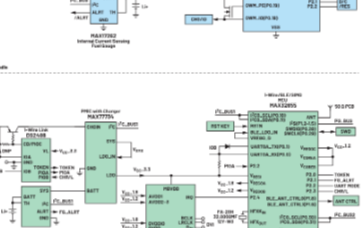



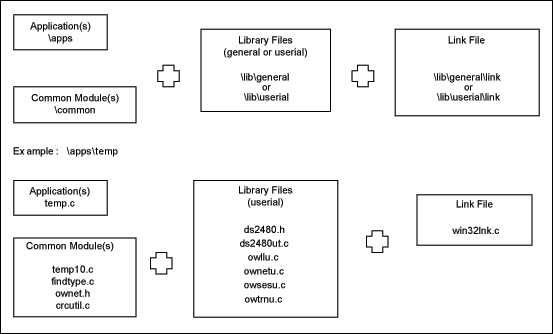
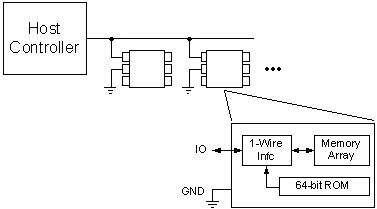
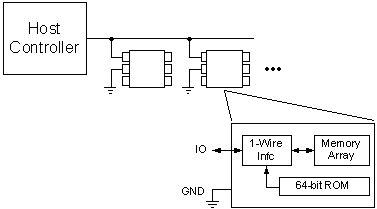

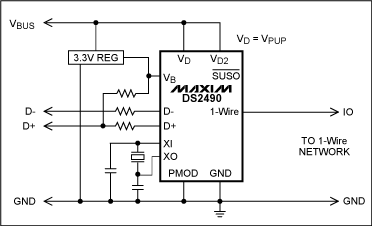

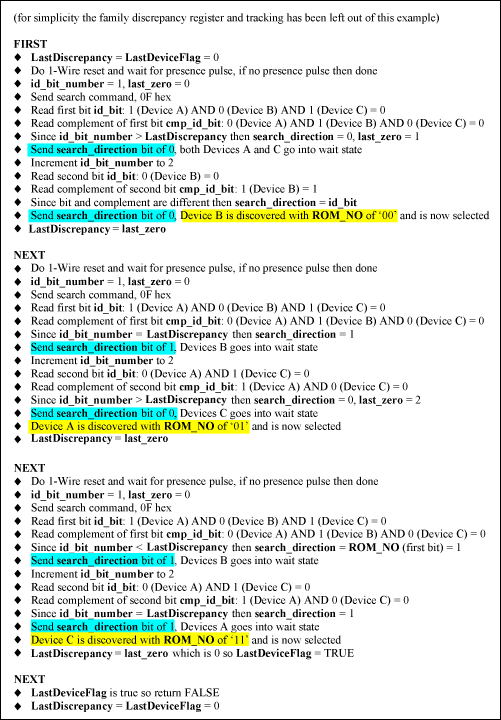
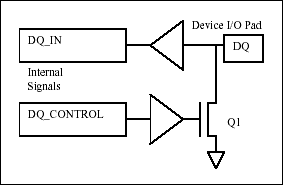
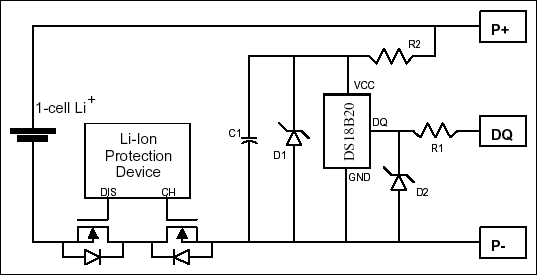
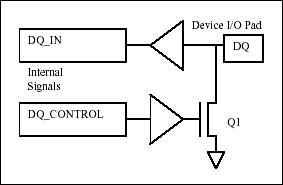
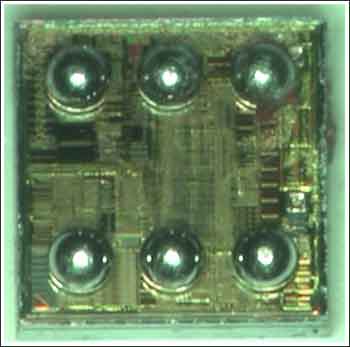
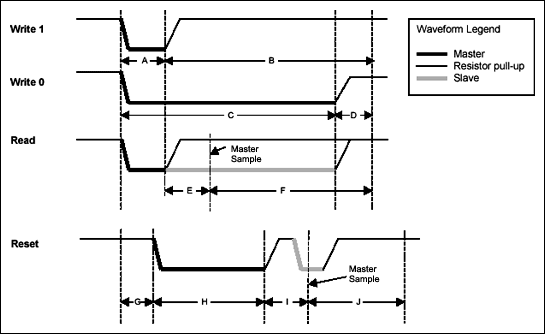


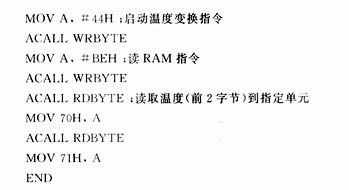
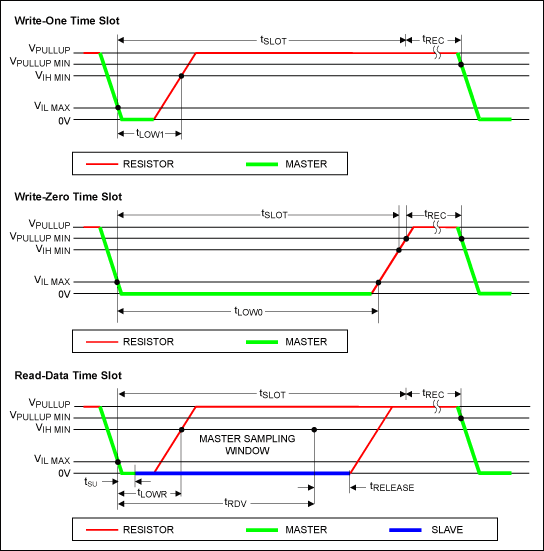







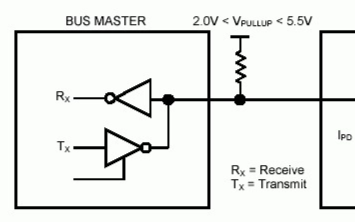
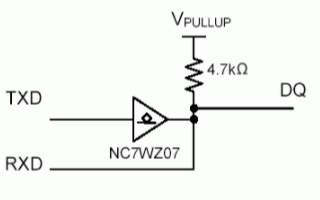


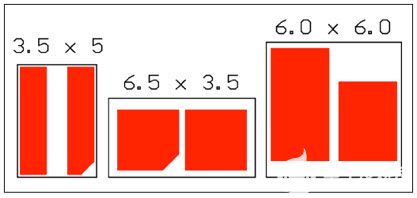
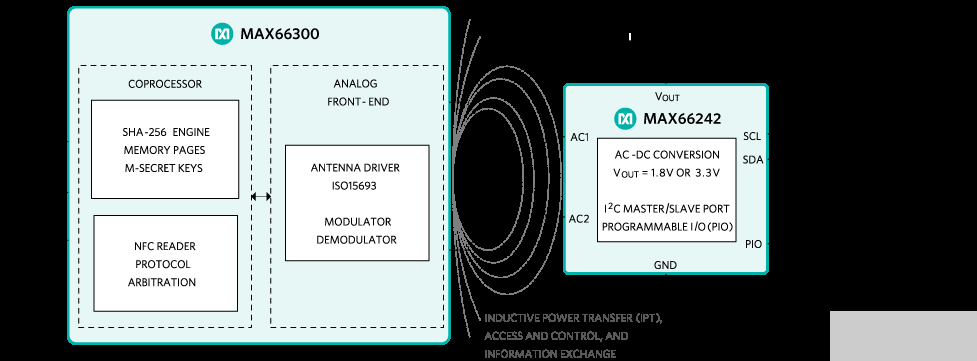
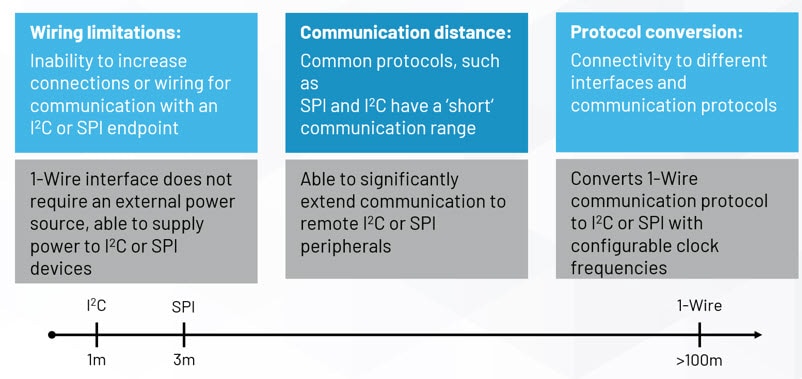
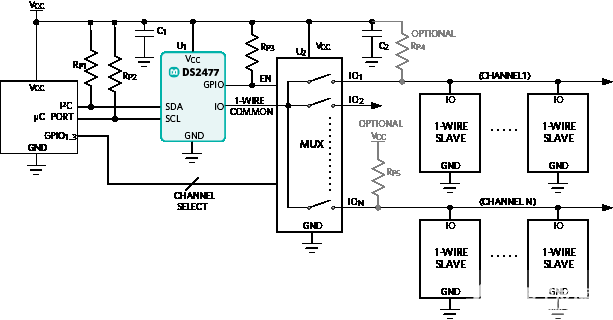
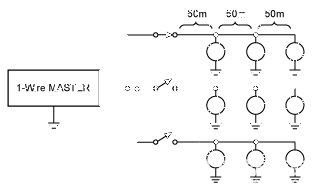
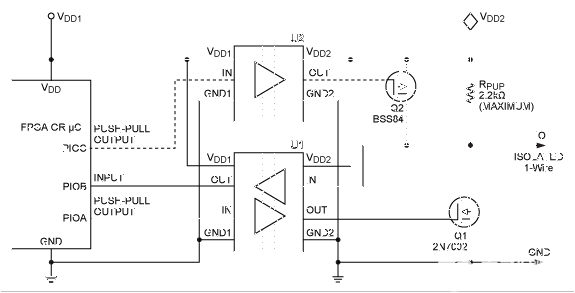
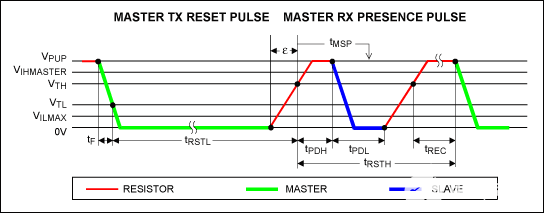
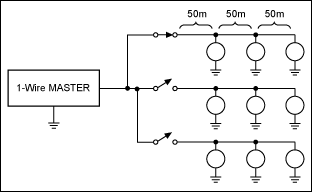
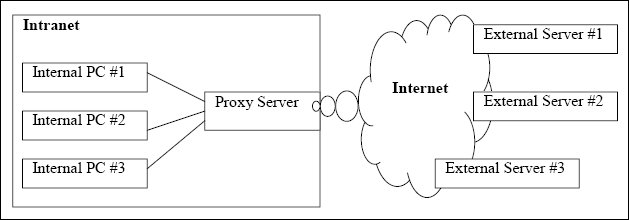
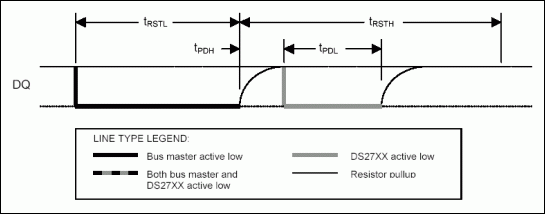
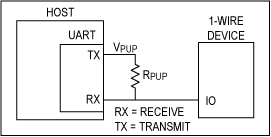
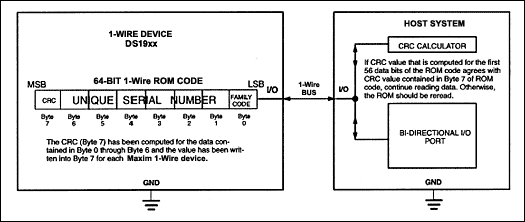
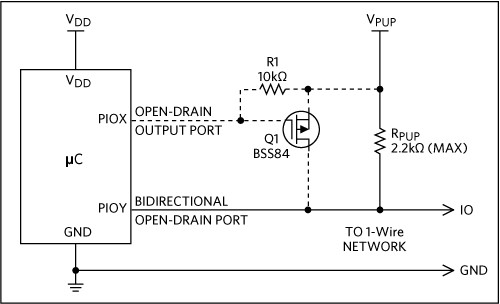












評論